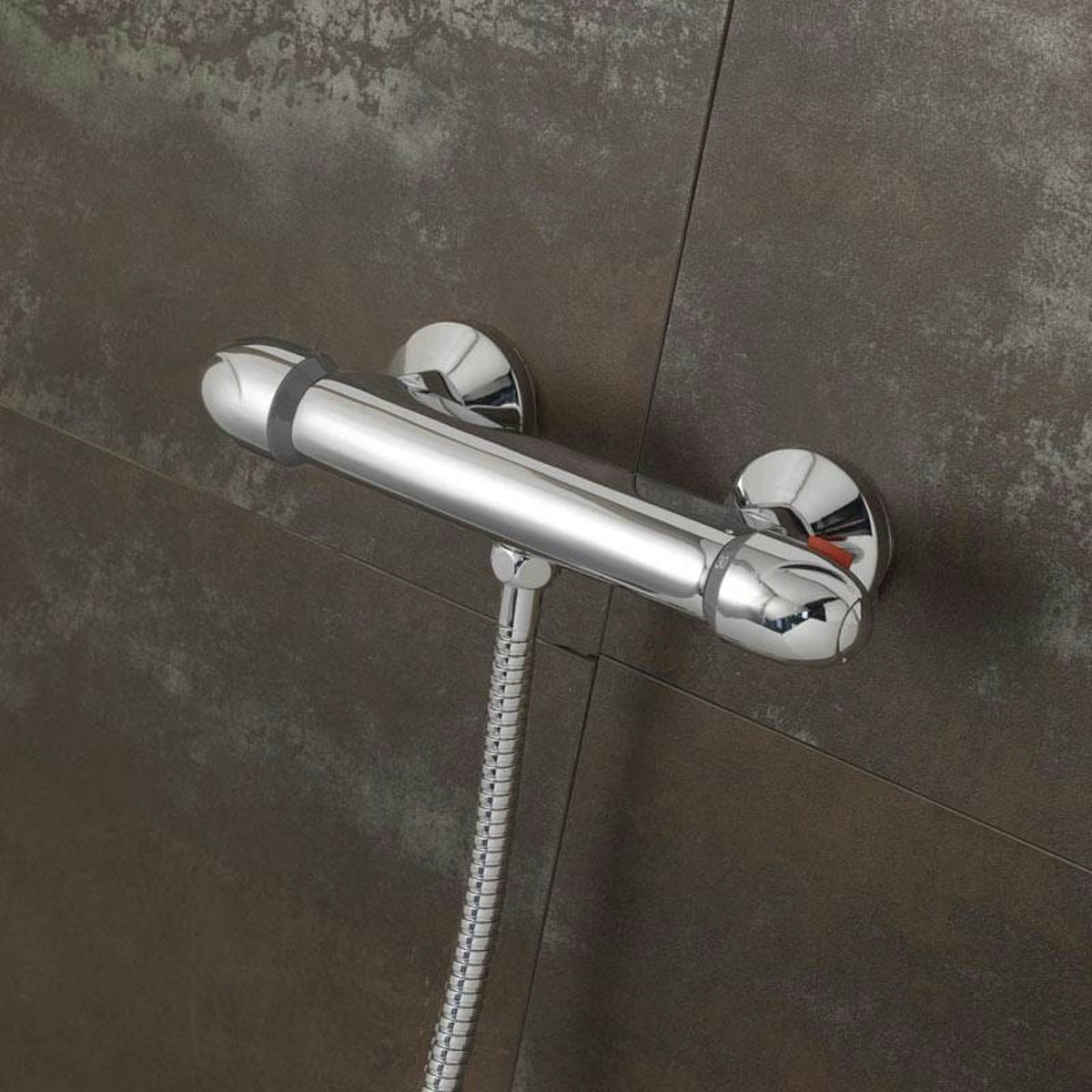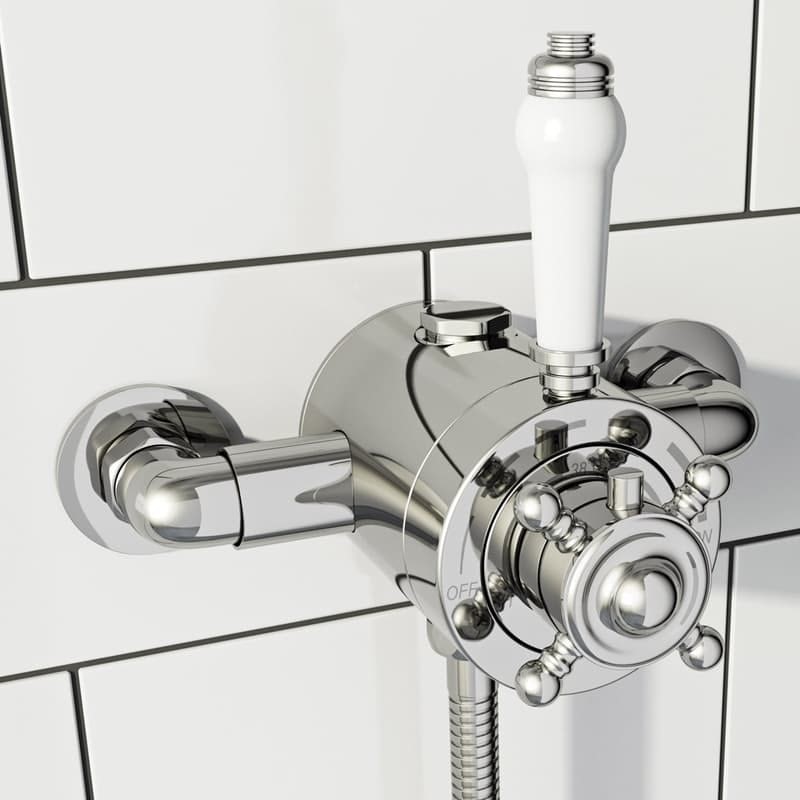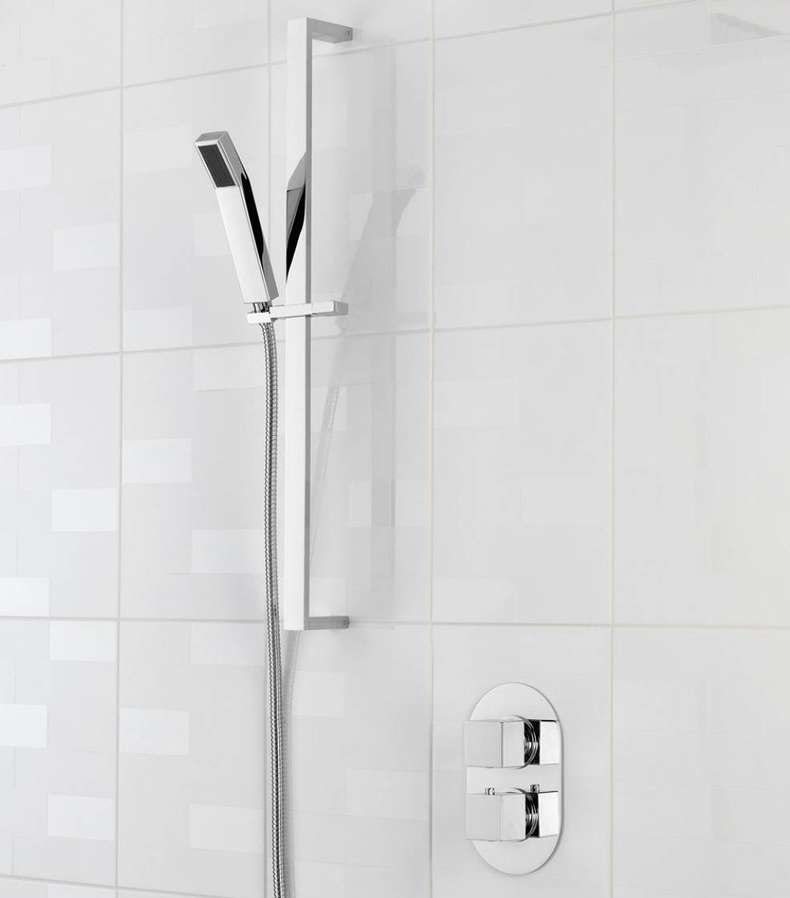When it comes to enjoying the best showering experience, you'll find it hard to beat a thermostatic shower valve.
One of the most reliable types of shower set-up, a thermostatic valve provides precise control over both temperature and flow. Plus, with an anti-scald safety feature, they bring added peace of mind for families with young children or elderly relatives.
Usually an integral part of a mixer shower, they offer satisfying, reliable showering any time of the day or night.
A thermostatic shower valve in action
Check out this short video, to watch a thermostatic shower valve in action:
Types of thermostatic shower valve
Bar valve
The Orchard Eden valve (pictured below) is typically known as a bar shower valve and sits external to the wall. It is easy to fit and manufactured in ABS plastic and brass for durability. The valve features a chrome-plated finish and has easy to read, easy to grip flow and temperature control dials.
This is for use with a single outlet and you can choose your own slider rail kit to go with it.
Bar shower valves are a type of exposed valve, which leads us neatly on to our next topic...
Exposed valve
If you’re looking for something a little more stylised, the Orchard Dulwich exposed thermostatic shower valve (pictured below) is great for single outlet showers. This is known as an exposed shower valve, as the workings sit external to the wall. And, while this is a traditional design, you'll also find plenty of modern or contemporary options too.
Concealed valve
For a more sleek and discreet style, you can choose a concealed shower valve, like the Mode Ellis oval twin thermostatic shower valve. All the workings sit behind a plate that is fitted flush to the wall, leaving just the control mechanisms exposed.
For further information on the different types of thermostatic shower valve, please see our in-depth guide to twin and triple shower valves.
How does it work?
A thermostatic shower valve controls how the hot and cold water supplies mix, and adjusts according to the heat of the water itself, helping to maintain a steady temperature.
There are 4 main elements to the valve which do this, which we’ll explain below:
Thermostatic element
This is an element within the valve that is sensitive to the temperature of the water flowing through it. It will increase or reduce in size. This is attached to a piston.
Piston
As the thermostatic element expands with an increase in heat, the attached piston will move across the entry portals for the hot and cold water flows, reducing the amount of hot water and increasing the amount of cold water, helping to maintain a constant temperature.
Return spring
This part of the valve effectively works in the opposite way to the piston. As the thermostatic element contracts with a decrease in heat, the return spring will move the piston back across the entry portals for the hot and cold water flows, increasing the amount of hot water and reducing the amount of cold water, keeping the overall water temperature constant.
Temperature control
Aside from the external casing, this is a part you can see and control. Usually shaped like a dial, this allows you to increase or reduce the heat of the water. This manually moves the piston, changing the proportions by which the hot and cold water flows are mixed.
Shop thermostatic shower valves
Now you know how they work, and what different types are available, why not take a look at our comprehensive range of thermostatic shower valves?














